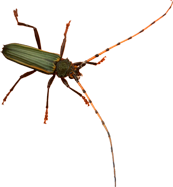Other taxa
While data are not yet as thorough for some taxa as for others, progress is being made. Below are some key studies that illustrate global patterns for other taxa. Each of these studies covers all or nearly all of a large-sized taxon, was published in a peer-reviewed scientific journal, and shows visually what the broad geographic patterns are for that taxon.
Freshwater Fish
Abell, et al. “Freshwater ecoregions of the world: a new map of biogeographic units for freshwater biodiversity conservation.” BioScience 58.5 (2008): 403-414.
Marine taxa
Tittensor, et al. “Global patterns and predictors of marine biodiversity across taxa.” Nature 466.7310 (2010): 1098-1101.
Roberts, et al. “Marine biodiversity hotspots and conservation priorities for tropical reefs.” Science 295.5558 (2002): 1280-1284.
Plants
Kier, et al. “A global assessment of endemism and species richness across island and mainland regions.” Proceedings of the National Academy of Sciences 106.23 (2009): 9322-9327.
Kreft, et al. “Global patterns and determinants of vascular plant diversity.” Proceedings of the National Academy of Sciences 104.14 (2007): 5925-5930.
Kier, et al. “Global patterns of plant diversity and floristic knowledge.” Journal of Biogeography 32.7 (2005): 1107-1116.
Ants
antmaps.org is the premiere site for ant diversity data, allowing you to explore what species occur where in the world and how different regions compare to one another.
Jenkins, et al. “Conservation implications of divergent global patterns of ant and vertebrate diversity.” Diversity and Distributions 19.8 (2013): 1084-1092.
Guénard, et al. “Global models of ant diversity suggest regions where new discoveries are most likely are under disproportionate deforestation threat.” Proceedings of the National Academy of Sciences 109.19 (2012): 7368-7373.
Termites
Eggleton, et al. “Explaining global termite diversity: productivity or history?” Biodiversity & Conservation 3.4 (1994): 318-330.
Earthworms
Phillips et al. “Global distribution of earthworm diversity.” Science 366(6464) (2019): 480-485.
